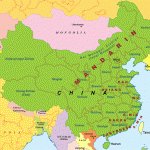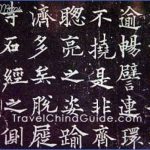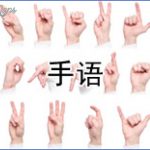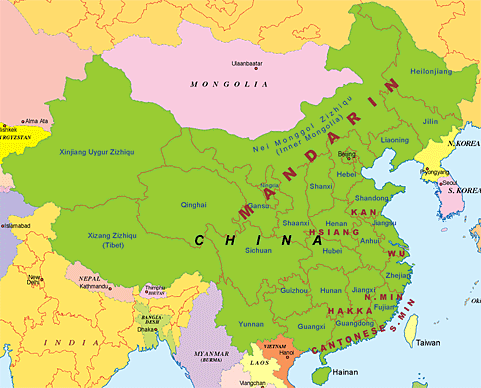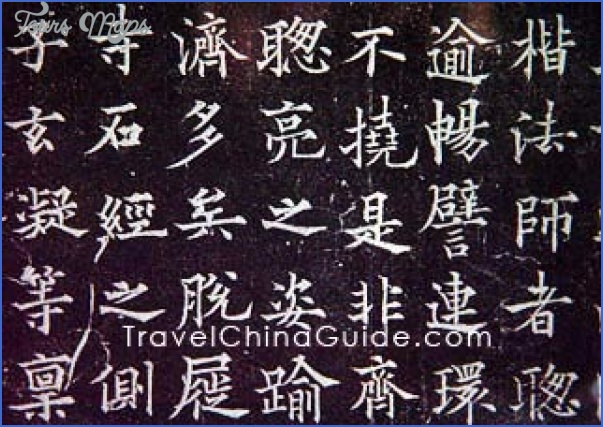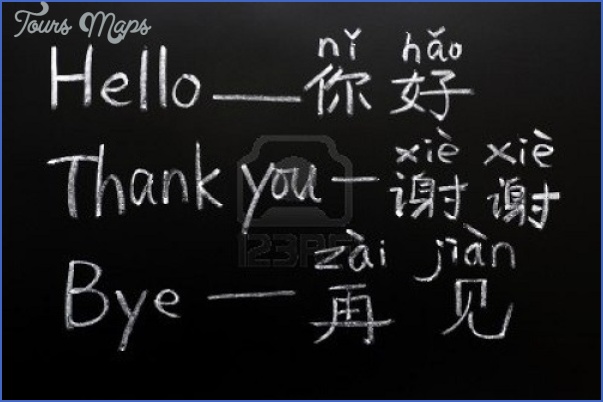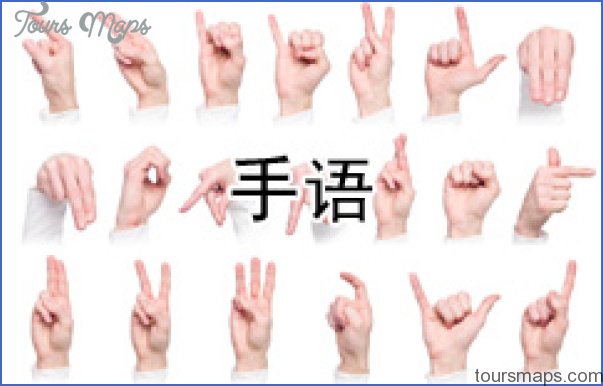Spoken Chinese breaks down into a number of dialects with a basic difference between those of the north and the south. There are eight main dialects in total with many sub-dialects which differ so much that speakers of one dialect cannot understand what is said by speakers of another. As a general rule southern dialects are older and longer-established than those ofthe north.
In addition to the different dialects China’s numerous national minorities also have many of their own idioms.
The official national language known as guoyu or putonghua has been developed from Mandarin, as it is known in the west, which is the dialect spoken around Beijing. This is the language taught in schools and used in all official circles and now employed throughout the country as a lingua francato get round the problem ofthe different dialects. Thus children who do not come from Beijing can speak putonghua in addition to their own regional language.
Meaning is given to spoken Chinese by the use of four different tones -indicated in this guide by accents on the letters in question – which impart meaning to each syllable according to its pitch or tonal inflection. For example, the word “ma” has four different meanings depending on the tone in which it is spoken, “ma”, with a high, flat tone, is “mother”, “ma” with a rising tone is “hemp, “ma” with a falling-rising tone is “horse”, and “ma” with a falling tone is “to scold or swear”.
Written Chinese largely bears no relation to the regional variations of the spoken language and uses pictographs rather than letters. The traditional characters have been considerably simplified, reducing the number of official pictographs from around 50,000 to between three and four thousand. In this respect the written language in China differs considerably from that used in Hong Kong, Taiwan and overseas which still make general use of the traditional written forms.
Romanisation, the transliteration of Chinese words into the Roman alphabet, tries to get as close as possible to the phonetic pronunciation of Chinese. Various systems have been used in the past and those who want to acquaint themselves with China’s more significant literature should at least know something of the two most important, namely Wade-Giles and Pinyin.
Tourists will particularly need to have some grasp of how to speak Pinyin which since 1979 has been the only official system. This will enable them to have at least a passable pronunciation. The names of stations, streets and stores appear in Pinyin as well as the Chinese characters, which usually take precedence.
In Pinyin most letters are pronounced as in English except for c, q and x. The list below provides some idea of the general rules for pronunciation.
Chinese answer the phone by saying “wei” (hello).
Although some Chinese words – especially place names – have entered the western vocabulary you can not rely on the western forms being understood throughout China.
A number of Chinese phrasebooks are available from bookshops, usually published by companies specialising in travel guides.
China’s extremes of altitude and of heat and cold (see Facts and Figures, Climate, and When to Go) can cause the kind of heart and respiratory problems that make it highly advisable to get a checkup from your doctor before leaving home, especially if you are planning a visit to Tibet or doing any form of trekking.
You should get up-to-date information well before you leave from your travel clinic or some similar organisation (see Health Precautions) on what vaccinations, etc. are recommended or required.
Health Insurance You would be well advised to take out some form of separate travellers’ health insurance to cover such emergencies as being flown home for treatment, since this can prove very expensive. In China For minor ailments you can get medication from chemists and pharmacies if you have nothing suitable with you (see Health Precautions, Medical Kit). For more serious illness you should consult your tourist guide, the local CITS office or the desk clerk at your hotel. They will be able to arrange for you to see a doctor or direct you to a hospital (yi yuan) with a special section for foreign patients where you can make yourself understood in English.
Language for China Photo Gallery
Maybe You Like Them Too
- The Best Cities To Visit in The World
- World’s 10 Best Places To Visit
- Coolest Countries in the World to Visit
- Travel to Santorini, Greece
- Map of Barbados – Holiday in Barbados

